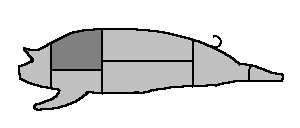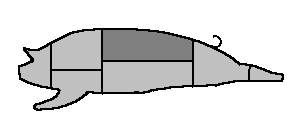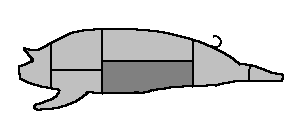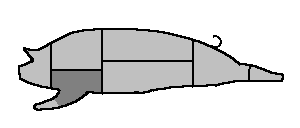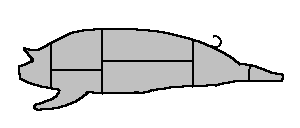|
|
pork shoulder Meat from this section is relatively fatty, which makes for juicy, tender, and flavorful roasts as well as clogged arteries. |
|
|
pork loin This is where we get the leanest and most tender pork cuts. Since they're lean, these cuts tend to dry out if overcooked. Pork is safe to eat if it's cooked to an interior temperature of 160 degrees. There are three main parts of the loin: the blade end, which is closest to the shoulder and tends to be fatty; the sirloin end, which is closest to the rump and tends to be bony; and the center portion in the middle, which is lean, tender, and expensive. |
|
|
pork leg The meat from this part of the pig is usually made into hams, but fresh leg meat is lean and makes a terrific roast. |
|
|
pork side This is where the spareribs come from. Other meat from this section is usually cured as bacon and salt pork. |
|
|
pork picnic shoulder This comes from the lower part of the pig's shoulder. It's usually made into smoked hams, but fresh picnic shoulder makes for very juicy barbecued pulled pork. |
|
|
miscellaneous pork cuts These cuts come from all over the pig. |
![]() ęCopyright
1996 - 2004 e.Techie. All Rights Reserved. Use of
this site is subject to the attached Terms &
Conditions
ęCopyright
1996 - 2004 e.Techie. All Rights Reserved. Use of
this site is subject to the attached Terms &
Conditions

Kebab
Low Cal Delight
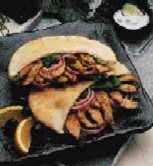
Sandwich
Middle eastern style
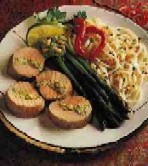
Tenderloin
Where is the apple sauce?
